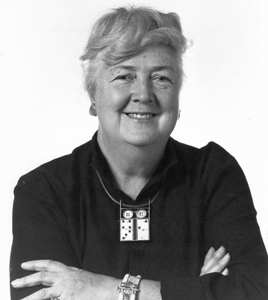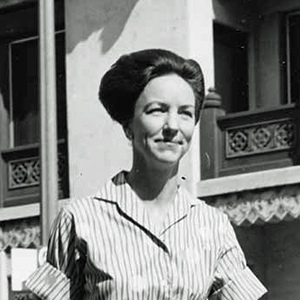Related Research Articles
Dunkin' Donuts LLC, trading as Dunkin' since 2019 in some markets, is an American multinational coffee and donut company, as well as a quick service restaurant. It was founded by Bill Rosenberg (1916–2002) in Quincy, Massachusetts, in 1950. The chain was acquired by Baskin-Robbins' holding company Allied Lyons in 1990; its acquisition of the Mister Donut chain and the conversion of that chain to Dunkin' Donuts facilitated the brand's growth in North America that year.

George Nelson was an American industrial designer. While lead designer for the Herman Miller furniture company, Nelson and his design studio, George Nelson Associates, designed 20th-century modernist furniture. He is considered a founder of American modernist design.

Mid-century modern (MCM) is a movement in interior design, product design, graphic design, architecture and urban development that was present in all the world, but more popular in the United States, Mexico, Brazil and Europe from roughly 1945 to 1970 during the United States's post-World War II period.

George Sakier (1897–1988) was an American artist and industrial designer. A man of multiple talents, he originally studied at the engineering school of Columbia University and Pratt Institute. Having composed the text Machine Design and Descriptive Geometry at age 19, he went on to work as a camouflage technician during World War I. After the war he continued to work as an artist, combining technology with classicism.

Mister Donut is an international chain of doughnut stores, operating mostly in Asia. It was founded in the United States in 1956 by Harry Winokur. Primary offerings include doughnuts, coffee, muffins and pastries. After being acquired by Allied Domecq in 1990, most of the North American stores became Dunkin' Donuts. Outside of the United States, Mister Donut maintains a presence in Japan, El Salvador, the Philippines, Thailand, Indonesia, Taiwan, and Singapore.

Leza Marie McVey (1907–1984) was an American ceramist and weaver. She is known for her large hand-built organic forms.
Tomoko Miho was a Japanese-American graphic designer and recipient of the 1993 AIGA Medal. She is known for her understanding of the relationship between space and object.

June Schwarcz was an American enamel artist who created tactile, expressive objects by applying technical mastery of her medium to vessel forms and plaques, which she considers non-functional sculpture.

Marianne Strengell was an influential Finnish-American Modernist textile designer in the twentieth century. Strengell was a professor at Cranbrook Academy of Art from 1937 to 1942, and she served as department head from 1942 to 1962. She was able to translate hand-woven patterns for mechanized production, and pioneered the use of synthetic fibers.

Ramona Solberg (1921–2005) created eccentric yet familiar jewelry using found objects; she was an influential teacher at the University of Washington School of Art and is often referred to as the "grandmother of Northwest found-art jewelry". Additionally, she served as an art instructor and a prolific jewelry artist in and around Seattle for three decades.

Eudorah Moore was an American curator and patron of the arts. She is regarded as revolutionizing California design, and for her advocacy of craft as an art form.

Eszter Haraszty was a Hungarian-born designer best known for her work as head of the textiles department at Knoll.

Rose Slivka was an American poet and writer for women's magazines in the twentieth century. From 1959 to 1979 she was the editor-in-chief for Craft Horizons. Her 1978 book on the artist Peter Voulkos is considered the first contemporary craft monograph.

Ruth Adler Schnee was a German-born American textile designer and interior designer based in Michigan. Schnee was best known for her modern prints and abstract-patterns of organic and geometric forms. She opened the Ruth Adler-Schnee Design Studio with her spouse Edward Schnee in Detroit, which operated until 1960. The studio produced textiles and later branched off into Adler-Schnee Associates home decor, interiors, and furniture.

Greta Daniel (1909–1962) was an Associate Curator in the Department of Architecture and Design at The Museum of Modern Art, New York.
Arthur Justin Drexler was an American museum curator and director of the Museum of Modern Art (MoMA) for 35 years.

Lili Blumenau (1912–1976) was an American fiber artist. She was a pivotal figure in the development of fiber arts and textile arts, particularly weaving, in the United States during the mid-part of the 20th century.
Rowena Reed Kostellow was an American industrial designer and professor. Alongside her husband, Alexander Kostellow, and other designers and artists, she co-founded the first industrial design education course at Pratt Institute.

Dorothy Sturm was an American artist and educator. She is known for her medical illustrations and her enamel work on metal.
Alexander Kostellow was a Persian-American industrial designer and educator, best known for his work developing the industrial design academic programs of Carnegie Institute of Technology and Pratt Institute.
References
- ↑ Keith, Kelsey (3 February 2015). "Meet the George Nelson Associate Who Designed the Dunkin' Donuts Logo". Dwell. Retrieved 9 December 2023.
- ↑ Falino, Jeannine (2011). Crafting modernism: midcentury American art and design: [exhibition Crafting modernism. Midcentury American art and design, Museum of Arts and Design, New York, October 11, 2011 - January 15, 2012; Memorial Art Gallery, Rochester, February 27 - May 21, 2012]. New York: Abrams. p. 278. ISBN 978-0810984806.
- 1 2 "Lucia Derespinis". Designing Women. Retrieved 9 December 2023.
- 1 2 "Lucia DeRespinis, FIDSA". Industrial Designers Society of America. Retrieved 9 December 2023.
- ↑ "Leisure Lighting". George Nelson Foundation. Retrieved 9 December 2023.
- ↑ "Illuminated Design: Metal Lighting in the Postwar Era". R & Company. 11 June 2020. Retrieved 9 December 2023.
- 1 2 "Lucia DeRespinis Receives 2008 Rowena Award - News /". RRK Fund. Retrieved 9 December 2023.
- ↑ "Lucia DeRespinis". Designed by Women. Retrieved 9 December 2023.
- ↑ "Lucia DeRespinis". The MFAH Collections. Retrieved 9 December 2023.
- ↑ "2238 (Eye/Lyre), designed by Lucia DeRespinis, Howard Miller Clock Company". George Nelson Foundation. Retrieved 12 December 2023.
- ↑ "2239 (Spindle/Spool) designed by Lucia DeRespinis". George Nelson Foundation. Retrieved 12 December 2023.